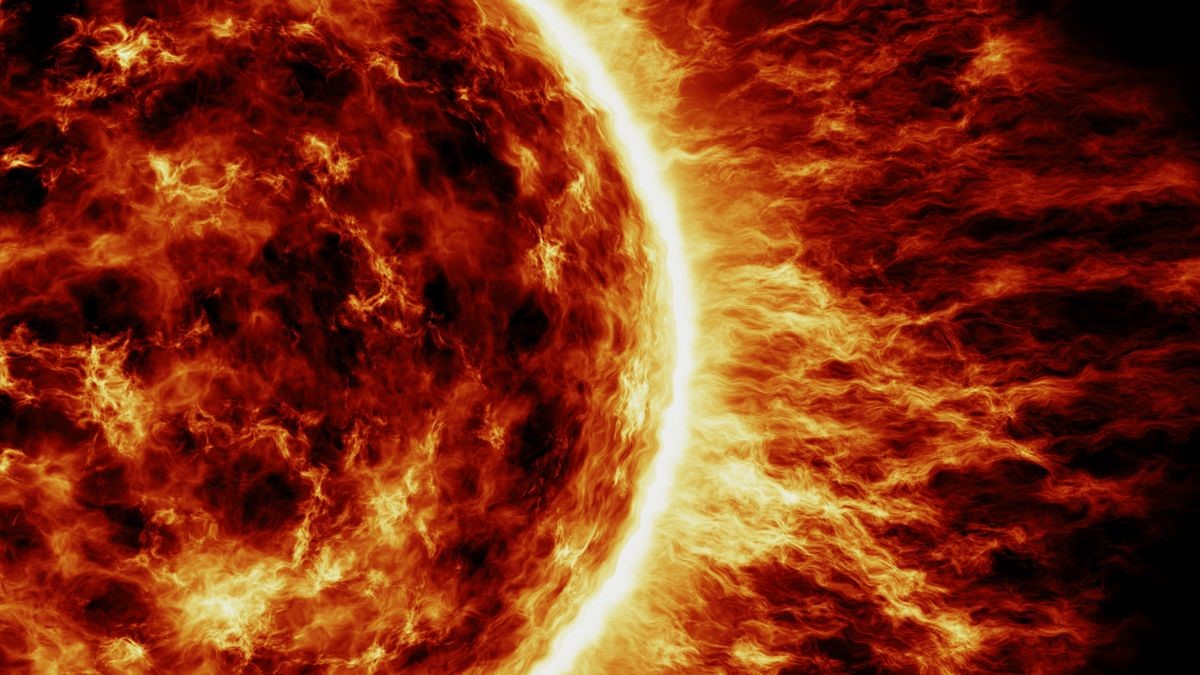Description

Source: Space.com
Disclaimer: Copyright infringement not intended.
Context
- On April 23, a remarkable celestial event unfolded as the Sun exhibited a rare "super" explosion, marked by the simultaneous eruption of four solar flares.
Details
- The recent quadruple solar flares erupted from separate regions across the Sun's surface, forming part of a single, interconnected eruption known as a sympathetic solar flare.
- The simultaneous eruption of four solar flares, spanning a third of the solar surface, constitutes an exceptionally rare occurrence in solar activity.
- The flares, originating from different sunspots and magnetic filaments, were interconnected by massive magnetic field loops, resulting in rapid succession and amplification of the eruption.
Potential Impacts on Earth
- Solar Storm Threat: There is a possibility that one of the flares has launched a solar storm, or coronal mass ejection (CME), toward Earth, posing risks to technological infrastructure and human safety.
- Disruptions: Solar storms can disrupt power grids, communication networks, and satellite operations, as well as increase radiation exposure for astronauts and aircraft passengers.
- Auroral Displays: However, if the ejected material reaches Earth, it may produce spectacular auroral displays at latitudes beyond their usual polar range, offering skywatchers a rare celestial spectacle.
About Solar Flares
- Solar flares are sudden and intense bursts of energy and radiation emitted from the Sun's surface.
- These explosive events are caused by the release of magnetic energy stored in the Sun's atmosphere and can have significant effects on space weather, telecommunications, and technological infrastructure on Earth.
Characteristics of Solar Flares:
- Emission of Radiation: Solar flares emit various forms of electromagnetic radiation, including X-rays, ultraviolet (UV) radiation, and radio waves, across a broad spectrum of wavelengths.
- Duration and Intensity: Solar flares can last from minutes to hours and vary in intensity from relatively minor eruptions to powerful events releasing the energy equivalent of millions of atomic bombs.
- Location: Solar flares typically originate from active regions on the Sun's surface, such as sunspots, where intense magnetic fields interact and become unstable.
- Associated Phenomena: Solar flares are often accompanied by coronal mass ejections (CMEs), which are massive eruptions of solar plasma and magnetic fields into space.

Causes of Solar Flares:
- Solar flares result from the sudden release of magnetic energy stored in the Sun's corona, caused by the process of magnetic reconnection. This occurs when magnetic field lines from different regions of the Sun's atmosphere converge and realign, releasing energy in the form of heat and radiation.
- Solar flares can be triggered by various factors, including the emergence of new magnetic flux, the collision of magnetic loops, or the destabilization of existing magnetic structures due to changes in the Sun's magnetic field.
Classification of Solar Flares:
- X-Ray Classification: Solar flares are classified based on their X-ray emission intensity using the GOES (Geostationary Operational Environmental Satellite) classification system, which categorizes flares into classes A, B, C, M, and X, with X-class flares being the most intense.
- Eruption Magnitude: Solar flares are also classified based on their eruption magnitude, with larger flares having a greater impact on space weather and Earth's magnetosphere.
Effects of Solar Flares:
- Space Weather Impact: Solar flares can cause disturbances in Earth's magnetosphere, ionosphere, and atmosphere, leading to geomagnetic storms, radio blackouts, and auroral displays (northern and southern lights).
- Technological Disruptions: Solar flares pose risks to satellite communications, GPS navigation, power grids, and other technological infrastructure, potentially causing disruptions and outages.
- Radiation Hazard: Solar flares emit harmful radiation that can pose risks to astronauts and spacecraft outside Earth's protective atmosphere. Adequate shielding and monitoring are necessary to mitigate these risks.
Sources:
TimesofIndia
|
PRACTICE QUESTION
Q. Examine the significance of solar flares in the context of space weather and their potential impact on Earth's environment and technological infrastructure. (250 Words)
|














